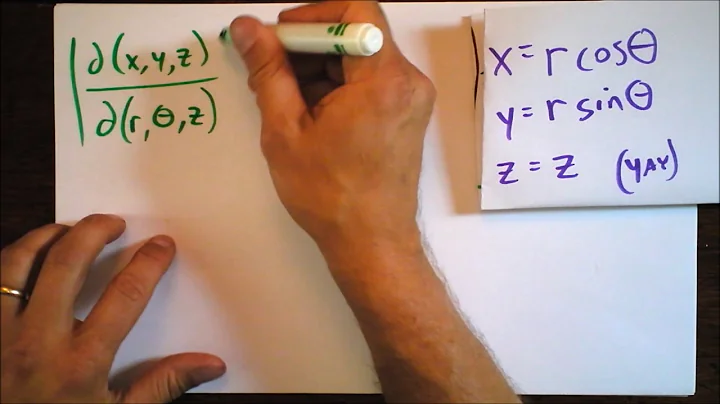image information along a polar coordinate system
Solution 1
What you're describing isn't exactly image processing in the traditional sense, but it's fairly easy to do with numpy, etc.
Here's a rather large example doing some of the things you mentioned to get you pointed in the right direction... Note that the example images all show results for the origin at the center of the image, but the functions take an origin argument, so you should be able to directly adapt things for your purposes.
import numpy as np
import scipy as sp
import scipy.ndimage
import Image
import matplotlib.pyplot as plt
def main():
im = Image.open('mri_demo.png')
im = im.convert('RGB')
data = np.array(im)
plot_polar_image(data, origin=None)
plot_directional_intensity(data, origin=None)
plt.show()
def plot_directional_intensity(data, origin=None):
"""Makes a cicular histogram showing average intensity binned by direction
from "origin" for each band in "data" (a 3D numpy array). "origin" defaults
to the center of the image."""
def intensity_rose(theta, band, color):
theta, band = theta.flatten(), band.flatten()
intensities, theta_bins = bin_by(band, theta)
mean_intensity = map(np.mean, intensities)
width = np.diff(theta_bins)[0]
plt.bar(theta_bins, mean_intensity, width=width, color=color)
plt.xlabel(color + ' Band')
plt.yticks([])
# Make cartesian coordinates for the pixel indicies
# (The origin defaults to the center of the image)
x, y = index_coords(data, origin)
# Convert the pixel indices into polar coords.
r, theta = cart2polar(x, y)
# Unpack bands of the image
red, green, blue = data.T
# Plot...
plt.figure()
plt.subplot(2,2,1, projection='polar')
intensity_rose(theta, red, 'Red')
plt.subplot(2,2,2, projection='polar')
intensity_rose(theta, green, 'Green')
plt.subplot(2,1,2, projection='polar')
intensity_rose(theta, blue, 'Blue')
plt.suptitle('Average intensity as a function of direction')
def plot_polar_image(data, origin=None):
"""Plots an image reprojected into polar coordinages with the origin
at "origin" (a tuple of (x0, y0), defaults to the center of the image)"""
polar_grid, r, theta = reproject_image_into_polar(data, origin)
plt.figure()
plt.imshow(polar_grid, extent=(theta.min(), theta.max(), r.max(), r.min()))
plt.axis('auto')
plt.ylim(plt.ylim()[::-1])
plt.xlabel('Theta Coordinate (radians)')
plt.ylabel('R Coordinate (pixels)')
plt.title('Image in Polar Coordinates')
def index_coords(data, origin=None):
"""Creates x & y coords for the indicies in a numpy array "data".
"origin" defaults to the center of the image. Specify origin=(0,0)
to set the origin to the lower left corner of the image."""
ny, nx = data.shape[:2]
if origin is None:
origin_x, origin_y = nx // 2, ny // 2
else:
origin_x, origin_y = origin
x, y = np.meshgrid(np.arange(nx), np.arange(ny))
x -= origin_x
y -= origin_y
return x, y
def cart2polar(x, y):
r = np.sqrt(x**2 + y**2)
theta = np.arctan2(y, x)
return r, theta
def polar2cart(r, theta):
x = r * np.cos(theta)
y = r * np.sin(theta)
return x, y
def bin_by(x, y, nbins=30):
"""Bin x by y, given paired observations of x & y.
Returns the binned "x" values and the left edges of the bins."""
bins = np.linspace(y.min(), y.max(), nbins+1)
# To avoid extra bin for the max value
bins[-1] += 1
indicies = np.digitize(y, bins)
output = []
for i in xrange(1, len(bins)):
output.append(x[indicies==i])
# Just return the left edges of the bins
bins = bins[:-1]
return output, bins
def reproject_image_into_polar(data, origin=None):
"""Reprojects a 3D numpy array ("data") into a polar coordinate system.
"origin" is a tuple of (x0, y0) and defaults to the center of the image."""
ny, nx = data.shape[:2]
if origin is None:
origin = (nx//2, ny//2)
# Determine that the min and max r and theta coords will be...
x, y = index_coords(data, origin=origin)
r, theta = cart2polar(x, y)
# Make a regular (in polar space) grid based on the min and max r & theta
r_i = np.linspace(r.min(), r.max(), nx)
theta_i = np.linspace(theta.min(), theta.max(), ny)
theta_grid, r_grid = np.meshgrid(theta_i, r_i)
# Project the r and theta grid back into pixel coordinates
xi, yi = polar2cart(r_grid, theta_grid)
xi += origin[0] # We need to shift the origin back to
yi += origin[1] # back to the lower-left corner...
xi, yi = xi.flatten(), yi.flatten()
coords = np.vstack((xi, yi)) # (map_coordinates requires a 2xn array)
# Reproject each band individually and the restack
# (uses less memory than reprojection the 3-dimensional array in one step)
bands = []
for band in data.T:
zi = sp.ndimage.map_coordinates(band, coords, order=1)
bands.append(zi.reshape((nx, ny)))
output = np.dstack(bands)
return output, r_i, theta_i
if __name__ == '__main__':
main()
Original Image:

Projected into polar coordinates:

Intensity as a function of direction from the center of the image:

Solution 2
Here's my take using scipy's geometric_transform method:
topolar.py
import numpy as np
from scipy.ndimage.interpolation import geometric_transform
def topolar(img, order=1):
"""
Transform img to its polar coordinate representation.
order: int, default 1
Specify the spline interpolation order.
High orders may be slow for large images.
"""
# max_radius is the length of the diagonal
# from a corner to the mid-point of img.
max_radius = 0.5*np.linalg.norm( img.shape )
def transform(coords):
# Put coord[1] in the interval, [-pi, pi]
theta = 2*np.pi*coords[1] / (img.shape[1] - 1.)
# Then map it to the interval [0, max_radius].
#radius = float(img.shape[0]-coords[0]) / img.shape[0] * max_radius
radius = max_radius * coords[0] / img.shape[0]
i = 0.5*img.shape[0] - radius*np.sin(theta)
j = radius*np.cos(theta) + 0.5*img.shape[1]
return i,j
polar = geometric_transform(img, transform, order=order)
rads = max_radius * np.linspace(0,1,img.shape[0])
angs = np.linspace(0, 2*np.pi, img.shape[1])
return polar, (rads, angs)
And here's some test usage:
testpolar.py
from topolar import topolar
from skimage.data import chelsea
import matplotlib.pyplot as plt
img = chelsea()[...,0] / 255.
pol, (rads,angs) = topolar(img)
fig,ax = plt.subplots(2,1,figsize=(6,8))
ax[0].imshow(img, cmap=plt.cm.gray, interpolation='bicubic')
ax[1].imshow(pol, cmap=plt.cm.gray, interpolation='bicubic')
ax[1].set_ylabel("Radius in pixels")
ax[1].set_yticks(range(0, img.shape[0]+1, 50))
ax[1].set_yticklabels(rads[::50].round().astype(int))
ax[1].set_xlabel("Angle in degrees")
ax[1].set_xticks(range(0, img.shape[1]+1, 50))
ax[1].set_xticklabels((angs[::50]*180/3.14159).round().astype(int))
plt.show()
... and the output:
Related videos on Youtube
cytochrome
Updated on October 28, 2020Comments
-
cytochrome over 3 years
I have a set of png images that I would like to process with Python and associated tools. Each image represents a physical object with known dimensions.
In each image there is a specific feature of the object at a certain pixel/physical location. The location is different for each image.
I would like to impose a polar coordinate system on a given image with the origin at the location of this feature.
I would then like to be able to get the following information: - the image intensity as a function of radial position for a given polar angle - the image intensity as a function of radial position when values are averaged over all polar angles.
I am experienced in Python programming and the use of many functions in NumPy and SciPy, but I am a complete novice when it comes to image analysis.
I would appreciate any advice you can give me on possible approaches to use to solve this problem.
Thank you.
-
cytochrome over 13 yearsThank you! That was very helpful.
-
Justin Peel over 13 years@user458738, you should accept his answer then by clicking the checkmark to the left of it.
-
Matt Hancock about 8 yearsNice answer. It look like the x-axis label is backwards, though. The neck is shown at roughly pi/2 radians in the polar image, but it's at -pi/2 radians in the original image.
-
 Minato over 7 years@JustinPeel I know this answer is old.. But I have a couple of questions.. How to computer the inverse projection from polar to Cartesian from a transformed image like the 2nd image and what exactly is the use of
Minato over 7 years@JustinPeel I know this answer is old.. But I have a couple of questions.. How to computer the inverse projection from polar to Cartesian from a transformed image like the 2nd image and what exactly is the use of# Make a regular (in polar space) grid based on the min and max r & theta -
 DanHickstein over 7 yearsMany thanks to Joe Kinghorn for this excellent answer that saved me a lot of time. In case someone finds it useful, a simple "grayscale" version of this
DanHickstein over 7 yearsMany thanks to Joe Kinghorn for this excellent answer that saved me a lot of time. In case someone finds it useful, a simple "grayscale" version of thisreproject_image_into_polarfunction is now incorporated into the PyAbel package: github.com/PyAbel/PyAbel/blob/master/abel/tools/polar.py










